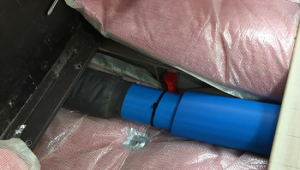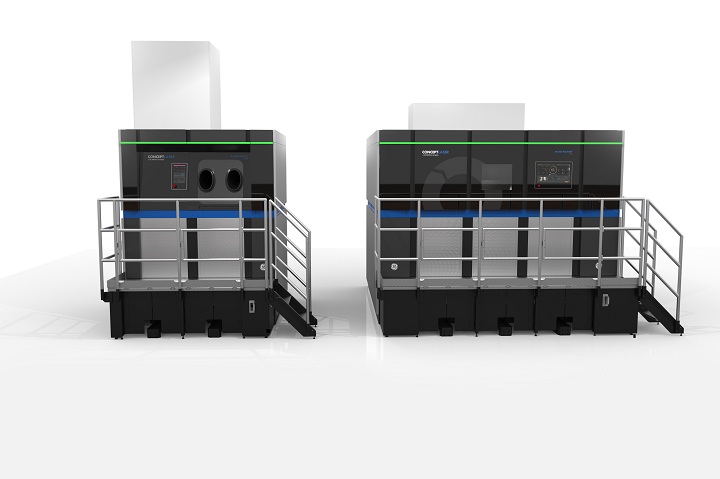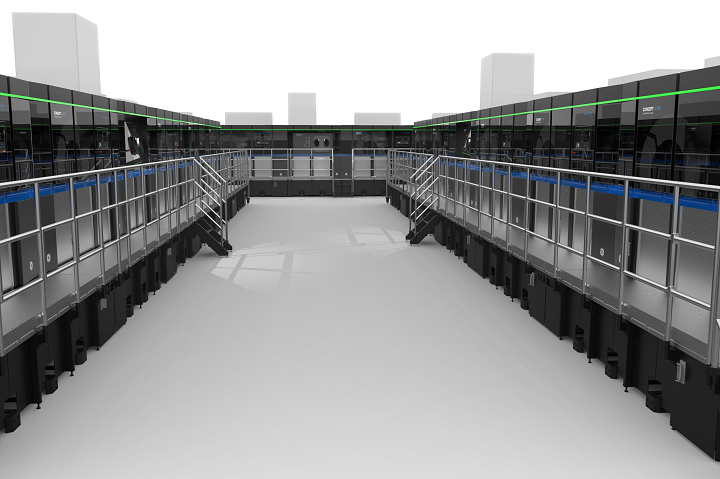In today’s 3D Printing News Briefs, we’re starting with a couple of stories from the recent Paris Air Show: TUSAS Engine Industries has invested in GE Additive technology, and ARMOR explained its AM materials partnership with Airbus. Moving on, Formlabs just hosted some live webinars, and PostProcess Technologies released a whitepaper on surface finishing metal 3D printed parts. Modix is sharing a lot of news, including four new 3D printer models, and finally, FormFutura has introduced sustainable packaging.
TEI Invests in GE Additive Technology
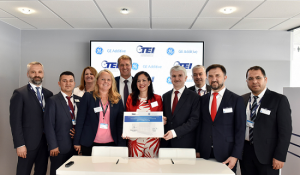 TUSAŞ Engine Industries, Inc. (TEI), founded in Turkey as a joint venture in 1985, has invested in GE Additive‘s direct metal laser melting (DMLM) technology. GE Additive announced at the recent Paris Air Show that TEI had purchased two of its M LINE factory systems and two M2 cusing machines. While the financial terms of the investment were not disclosed, the 3D printers will be installed at TEI’s Eskişehir headquarters, joining its current fleet of laser and Arcam EBM printers.
TUSAŞ Engine Industries, Inc. (TEI), founded in Turkey as a joint venture in 1985, has invested in GE Additive‘s direct metal laser melting (DMLM) technology. GE Additive announced at the recent Paris Air Show that TEI had purchased two of its M LINE factory systems and two M2 cusing machines. While the financial terms of the investment were not disclosed, the 3D printers will be installed at TEI’s Eskişehir headquarters, joining its current fleet of laser and Arcam EBM printers.
Professor Dr. Mahmut Faruk Akşit, President and CEO of TEI, said, “Today, we invest in TEI’s future by investing in additive manufacturing, ‘the future of manufacturing.’ Our longstanding partnership and collaboration with GE is now broadening with GE Additive’s machine portfolio.”
Armor and Airbus Partner Up for Aerospace 3D Printing
Continuing with news from the Paris Air Show, ARMOR Group – a French multinational company – was also at the event, exhibiting its Kimya materials and a miniFactory printer, as well as its new aeronautics filament, PEI-9085. While there, ARMOR also met up with Airbus, which has frequently used 3D printing to create parts and prototypes, such as an air nozzle for the climate control system of its 330neo passenger cabin. The company has now requested ARMOR’s expertise in better qualifying its materials in order to standardize its own AM process.
“We have qualified the PLA-HI and PETG-S. We are currently testing more technical materials, such as the PETG Carbon before moving on to the PEI and PEEK. We have requested a specific preparation to make it easier to use them in our machines,” Marc Carré, who is responsible for innovation at Airbus ProtoSpace in Saint-Nazaire,
“We expect to be able to make prototypes quickly and of high quality in terms of tolerances, aesthetics and resistance.
“Thanks to ARMOR and its Kimya range and services, we have found a partner we can share our issues with and jointly find solutions. It is very important for us to be able to rely on a competent and responsive supplier.”
Webinars by Formlabs: Product Demo and Advanced Hybrid Workflows
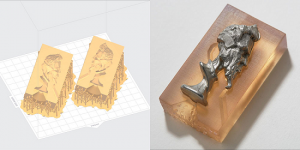 Recently, Formlabs hosted a couple of informative webinars, and the first was a live product demonstration of its Form 3. 3D printing expert Faris Sheikh explained the technology behind the company’s Low Force Stereolithography (LFS) 3D printing, walked through the Form 3’s step-by-step-workflow, and participated in a live Q&A session with attendees. Speaking of workflows, Formlabs also held a webinar titled “Metal, Ceramic, and Silicone: Using 3D Printed Molds in Advanced Hybrid Workflows” that was led by Applications Engineering Lead Jennifer Milne.
Recently, Formlabs hosted a couple of informative webinars, and the first was a live product demonstration of its Form 3. 3D printing expert Faris Sheikh explained the technology behind the company’s Low Force Stereolithography (LFS) 3D printing, walked through the Form 3’s step-by-step-workflow, and participated in a live Q&A session with attendees. Speaking of workflows, Formlabs also held a webinar titled “Metal, Ceramic, and Silicone: Using 3D Printed Molds in Advanced Hybrid Workflows” that was led by Applications Engineering Lead Jennifer Milne.
“Hybrid workflows can help you reduce cost per part and scale to meet demand, while taking advantage of a wider range of materials in the production of end-use parts,” Formlabs wrote. “Tune in for some inspiration on new ways of working to advance your own process or to stay on top of trends and capabilities across the ever-growing range of printable materials.”
PostProcess Whitepaper on 3D Print Surface Finishing
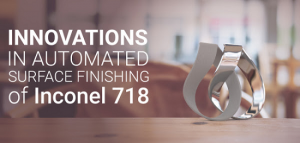 PostProcess Technologies has released its new whitepaper, titled “Considerations for Optimizing Surface Finishing of 3D Printed Inconel 718.” The paper discusses a novel approach to help improve surface finish results by combining a patent-pending chemistry solution and software-driven automation. Using this new approach, PostProcess reports increased consistency and productivity, as well as decreased technician touch time. The whitepaper focuses on surface finishing 3D prints made with alloys and metals, but especially zeroes in on nickel superalloy Inconel 718, 3D printed with DMLS technology.
PostProcess Technologies has released its new whitepaper, titled “Considerations for Optimizing Surface Finishing of 3D Printed Inconel 718.” The paper discusses a novel approach to help improve surface finish results by combining a patent-pending chemistry solution and software-driven automation. Using this new approach, PostProcess reports increased consistency and productivity, as well as decreased technician touch time. The whitepaper focuses on surface finishing 3D prints made with alloys and metals, but especially zeroes in on nickel superalloy Inconel 718, 3D printed with DMLS technology.
“With current surface finishing techniques used that are largely expensive, can require significant manual labor, or require the use of hazardous chemicals, this paper analyzes the benefits of a novel alternative method for post-printing the part’s surface,” PostProcess wrote. “Key considerations are reviewed including part density and hardness, corrosion (chemical) resistance, grain structure, as well as manufacturing factors including the impact of print technology and print orientation on the surface profile.”
You can download the new whitepaper here.
Modix Announces New 3D Printers, Reseller Program, and Executive
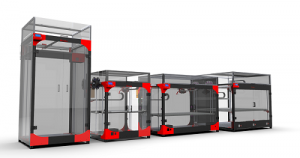 Israel-based Modix, which develops large-format 3D printers, has plenty of news to share – first, the company has come out with four new 3D printer models based on its modular design. The new models, which should be available as soon as Q3 2019, are the 1000 x 1000 x 600 mm Big-1000, the 600 x 600 x 1200 mm Big-120Z, the 1800 x 600 x 600 mm Big-180X, and the 400 x 400 x 600 mm Big-40. Additionally, the company has launched a reseller program, where resellers can offer Modix printers to current customers of smaller printers as the “best next 3D printer.” Finally, Modix has appointed 3D printing veteran John Van El as its new Chief Commercial Officer; he will help build up the company’s partner program.
Israel-based Modix, which develops large-format 3D printers, has plenty of news to share – first, the company has come out with four new 3D printer models based on its modular design. The new models, which should be available as soon as Q3 2019, are the 1000 x 1000 x 600 mm Big-1000, the 600 x 600 x 1200 mm Big-120Z, the 1800 x 600 x 600 mm Big-180X, and the 400 x 400 x 600 mm Big-40. Additionally, the company has launched a reseller program, where resellers can offer Modix printers to current customers of smaller printers as the “best next 3D printer.” Finally, Modix has appointed 3D printing veteran John Van El as its new Chief Commercial Officer; he will help build up the company’s partner program.
“We are proud to have John with us,” said Modix CEO Shachar Gafni. “John brings aboard unique capabilities and experiences strengthening Modix’s current momentum on the path to become a global leader in the large scale 3D printing market.”
FormFutura Presents Recyclable Cardboard Packaging
 Dutch filament supplier FormFutura wants to set an example for the rest of the industry by not only raising awareness about sustainability, but also by stepping up its own efforts. That’s why the company has moved completely to cardboard packaging – all of its filaments up to one kilogram will now be spooled onto fully recyclable cardboard spools, which will also come in cardboard boxes. All of FormFutura’s cardboard spools and boxes are manufactured in its home country of the Netherlands, which helps reduce its carbon footprint in terms of travel distance, and the material is also a natural drying agent, so it will better protect filament against humidity.
Dutch filament supplier FormFutura wants to set an example for the rest of the industry by not only raising awareness about sustainability, but also by stepping up its own efforts. That’s why the company has moved completely to cardboard packaging – all of its filaments up to one kilogram will now be spooled onto fully recyclable cardboard spools, which will also come in cardboard boxes. All of FormFutura’s cardboard spools and boxes are manufactured in its home country of the Netherlands, which helps reduce its carbon footprint in terms of travel distance, and the material is also a natural drying agent, so it will better protect filament against humidity.
“Over the past couple of months we’ve been brainstorming a lot on how we can make FormFutura more sustainable and help renew our branding. As over this period we have received feedback from the market about helping to find a viable solution to the empty plastic spools, we started setting up a plan to reduce our carbon footprint through cardboard spools,” said Arnold Medenblik, the CEO of FormFutura. “But as we got to working on realizing rolling out cardboard spools, we’ve also expanded the scope of the project to include boxes and logistics.”
Because the company still has some warehoused stock on plastic spools, customers may receive both types of packaging during the transition.
Discuss these stories and other 3D printing topics at 3DPrintBoard.com or share your thoughts in the Facebook comments below.

